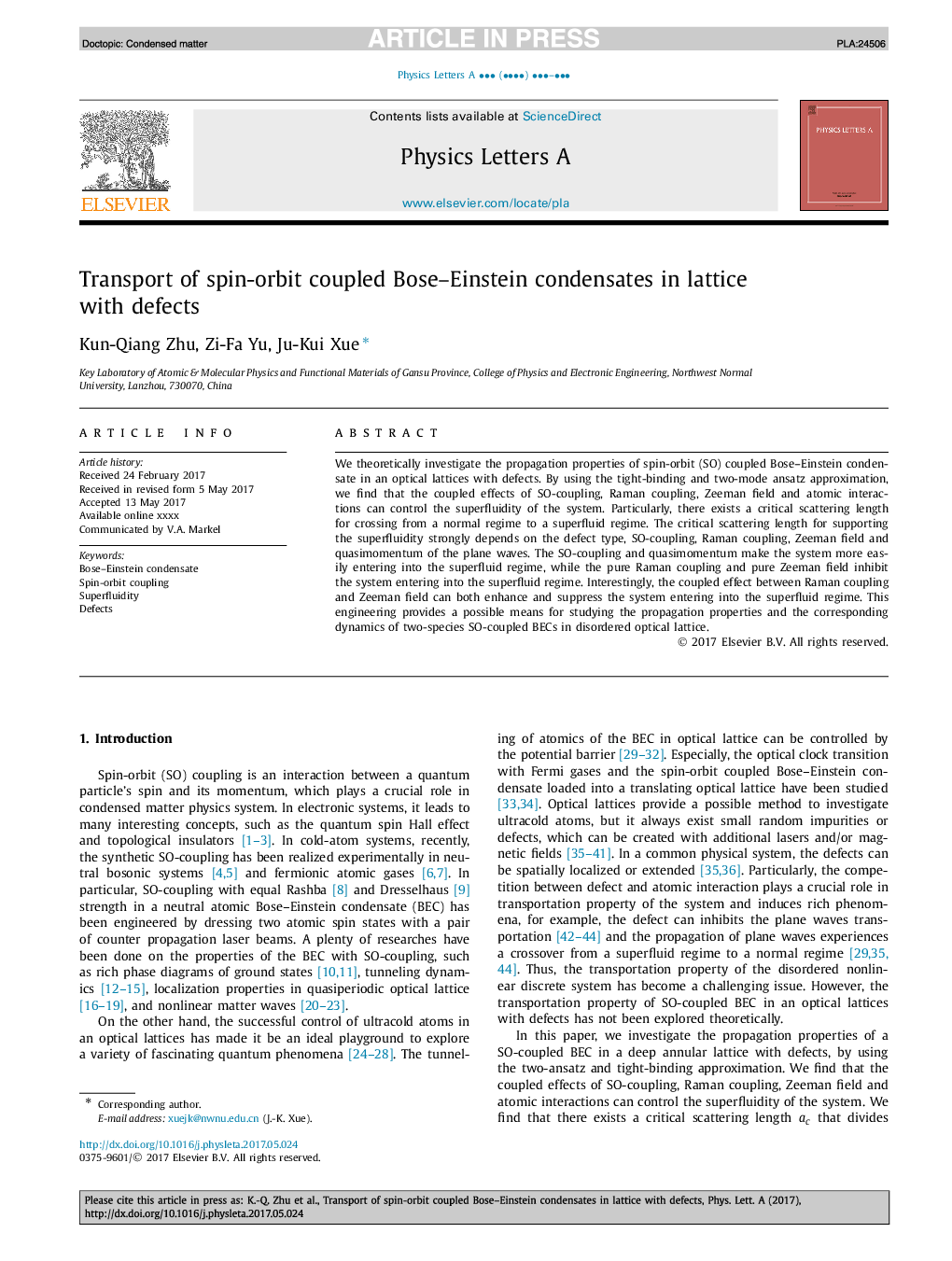| Article ID | Journal | Published Year | Pages | File Type |
|---|---|---|---|---|
| 5496591 | Physics Letters A | 2017 | 6 Pages |
Abstract
We theoretically investigate the propagation properties of spin-orbit (SO) coupled Bose-Einstein condensate in an optical lattices with defects. By using the tight-binding and two-mode ansatz approximation, we find that the coupled effects of SO-coupling, Raman coupling, Zeeman field and atomic interactions can control the superfluidity of the system. Particularly, there exists a critical scattering length for crossing from a normal regime to a superfluid regime. The critical scattering length for supporting the superfluidity strongly depends on the defect type, SO-coupling, Raman coupling, Zeeman field and quasimomentum of the plane waves. The SO-coupling and quasimomentum make the system more easily entering into the superfluid regime, while the pure Raman coupling and pure Zeeman field inhibit the system entering into the superfluid regime. Interestingly, the coupled effect between Raman coupling and Zeeman field can both enhance and suppress the system entering into the superfluid regime. This engineering provides a possible means for studying the propagation properties and the corresponding dynamics of two-species SO-coupled BECs in disordered optical lattice.
Related Topics
Physical Sciences and Engineering
Physics and Astronomy
Physics and Astronomy (General)
Authors
Kun-Qiang Zhu, Zi-Fa Yu, Ju-Kui Xue,
